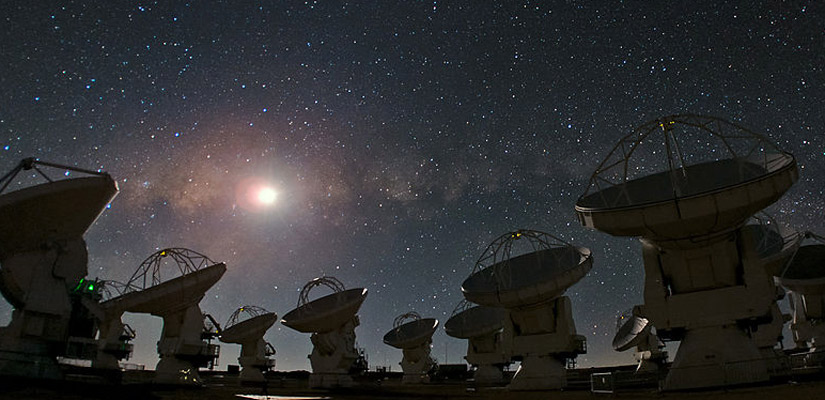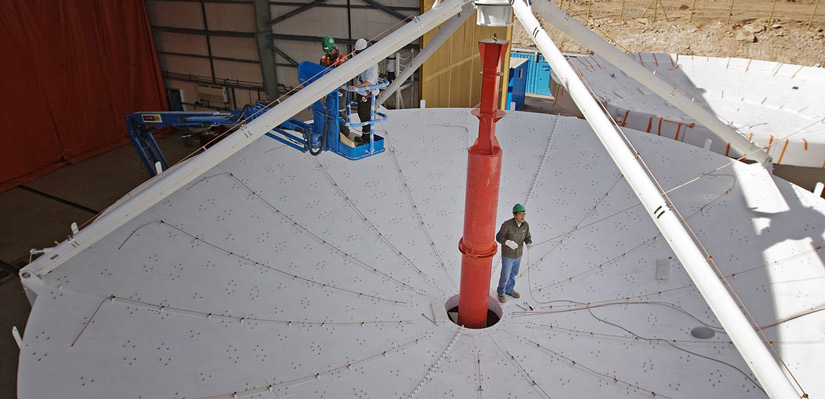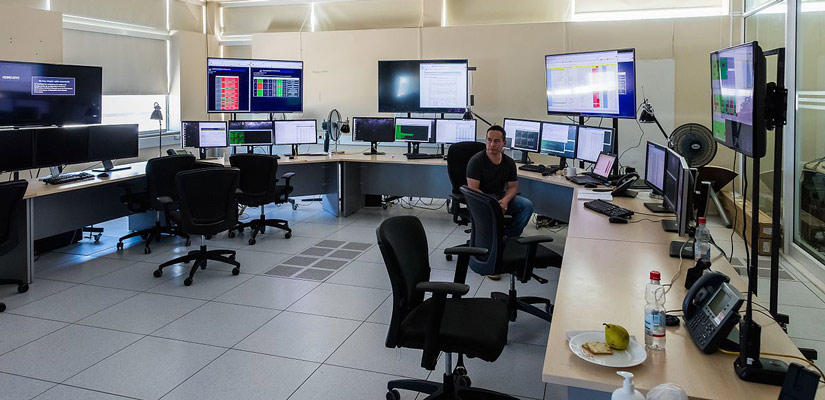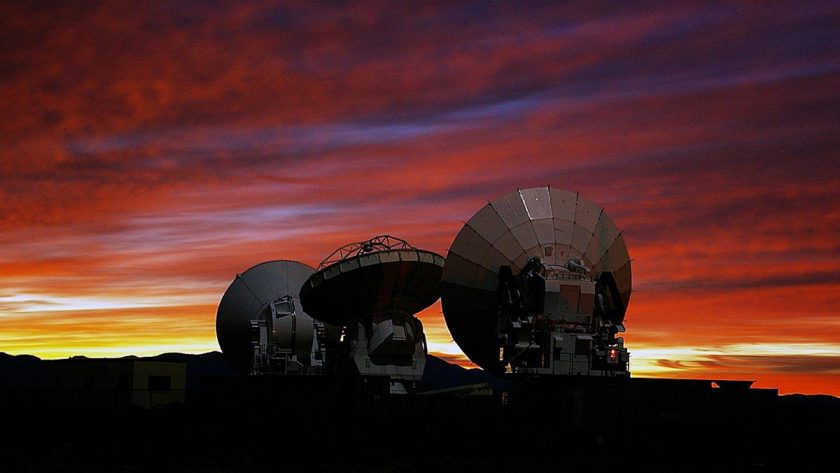This post is also available in:
 Español
Español
Located 5,000 meters above sea level, in a remote location reminiscent of the great plateaus of Mars, the 66 ALMA antennas are searching for answers to questions about the origin of the universe.
In this post we want to tell you all about the Chilean Atacama ALMA Observatory, the best radio astronomy station in the world.
Atacama ALMA Observatory
In Chile, you can visit the San Pedro de Atacama Desert a world that by the shapes of its volcanoes and the reddish color of the Death Valley in Atacama, is very reminiscent of the planet of Mars. But this Martian-tinged situation is not the only extraordinary thing visitors can find here.
Located under the shadow of the Licanbur and Láscar volcanoes, at 2,900 meters above sea level, is the operations center of the ALMA observation station. This center is connected to the Clano de Chajnantor Observatory at 5,000 meters above sea level where the 7 and 12 meter diameter antennas are located.

ALMA, acronym for Atacama Large Millimetre/submillimetre Array, is the largest astronomical project in the world. Not in vain, universities, institutions and governments from different countries in America, Europe, and Asia are part of this international association that actively collaborates with the government of Chile.
As of today, ALMA in Atacama is the observatory with the highest investment in the world, specifically more than 1,100 million euros. Luckily, every astronomy lover can take the astronomical tour of San Pedro de Atacama, and spend the night observing the stars from one of the best places in the world for it.
The astronomical observatory consists of three parts: the original array with 50 antennas of 12 meters in diameter; the compact array funded by the Asian partners with four antennas of 12 meters in diameter; and, finally, twelve more antennas of 7 meters in diameter.

The world’s best radio astronomy station
The observatory ALMA of Atacama has its origin in the confluence of the observing agencies of the United States -NRAO- and its European counterpart -ESO-. It was in 1997 when they decided to combine their projects to create the world’s largest radio astronomy facility.
Cooperation that was closed in 2004 with the incorporation of Japan, Canada, Taiwan and, the owner of the observatory, Chile. But ALMA still needed another decade to complete the assembly of the project.
The first results from the full station, in its test phase during October 2009, exceeded expectations. Finally, in 2014, the last of its 66 antennas arrived on the plateau and the station began to operate on a regular basis.
One of the advantages of ALMA lies in the possibility of moving the antennas, thus changing the resolution and focus of the array. To do this, they use two giant trucks specially built to lift and transport the antennas with a weight of up to 100 tons and at a maximum speed of 12 km/h.

Thanks to this, scientists can fine-tune their observations and generate more accurate results. These two special trucks have extraordinary dimensions, measuring 6 meters high, 10 meters wide and weighing 130 tons. Like the antennas, these beasts on wheels are engineering masterpieces.
But probably the most important part of ALMA is its brain. It is a correlator with an operating capacity of 17 petaflops… Have you understood anything? Don’t worry. Basically, it is that thanks to its characteristics, it is one of the fastest supercomputers in the world, exclusive for research tasks.
The purpose of the antennas
At the time of its installation, the antennas were the most precise instruments in radio astronomy. The array operates with wavelengths from 9.6 to 0.3 millimeters and can analyze the light spectrum with great precision.
Radio astronomy allows the visualization of radiation waves in the cosmos that human eyes cannot see. But with the help of antennas as precise as those of ALMA it is possible to transform these waves of radiation into a visible spectrum.
In the past, radio astronomy was responsible for the discovery of different objects in space: pulsars, quasars and other active galaxies. Very important information to understand the evolution of the universe and our solar system as we know it today.

The future of Atacama ALMA observatory
With a lifetime of at least 30 years, scientists working at the ALMA station have a whole series of goals defined for the future. In its roadmap for the coming years, the European agency collaborating on the project has presented three measures to push them forward in the future:
- Origin of constellations: scientists want to investigate the process of the birth of galaxies by analyzing their changes in the spectrum of light.
- Origin of chemical complexity: tracing the evolution of organic molecules from the formation of stars and planets to the scale of solar systems and galaxies.
- Birth of planets: Analyze the birth region of planets in solar systems to discover planets in the process of transformation.
With these future goals and a bit of luck, ALMA is sure to surprise us with new discoveries in the coming years.
And you, do you like astronomy? Would you like to visit the Atacama ALMA Observatory?






